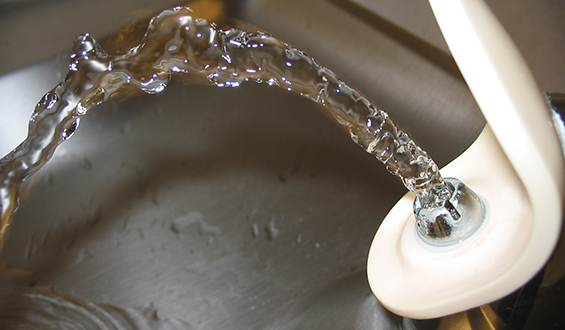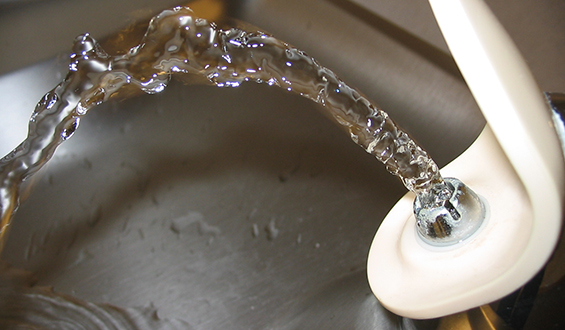 (Photo: Josh, Flickr, Creative Commons)
(Photo: Josh, Flickr, Creative Commons)
As a result of a widely-publicized crisis occurring in Flint, Michigan, school officials across the country are hard at work testing sinks and faucets in classrooms and cafeterias in an effort to notify parents of any ongoing safety issues.
Because most schools receive the majority of their water from municipal sources that already test their water elsewhere, very few schools and daycare centers across the country are required to check for lead. However, state and federal lawmakers are pushing for wider testing to take place.
According to Environmental Protection Agency data concerning schools and daycare centers that do get water from their own systems, an analysis performed by The Associated Press found that 278 had violated federal lead levels at some point in the past three years. Close to one-third of those in that group had lead levels that were twice the federal limit, writes John Seewer for AP.
Most of the time, the higher lead levels are a result of older buildings that have lead pipes, aging drinking fountains, or water fixtures made with lead parts.
Lead poisoning in children is known to cause brain and kidney damage. EPA rules state that water cannot contain more than 15 parts per billion, although no levels of lead are considered to be safe.
Hartford County Public Schools in Maryland recently discovered lead levels reaching 130 ppb, nine times above the federal limit, at Youth’s Benefit Elementary, a classroom building for students in the third through the fifth grades. The 43-year-old building is among the state’s most consistent transgressors of the federal limits, having tested above 15 ppb eight times since 1993.
According to Hartford County schools spokeswoman Jillian Lader, the school system has given bottled water to students at the school since 2009. In addition, water fountains have been turned off, warnings have been posted on taps, and required notices have been sent to all parents and guardians. A permanent solution is expected in August 2017 when a new, $37 million school is expected to open for the close to 550 students and staff members. The new building is home to an EPA-compliant water system.
However, that is not an option for the many school systems that cannot afford the high cost associated with opening a new building. Even replacing the pipes can cost the same as an entire new school, according to Jack Stoskopf, an assistant superintendent at Riverside Elementary in the northern Wisconsin town of Ringle. He said that instead, school officials there have simply removed the drinking fountains in favor of supplying students with bottled water at a cost of around $1,000 per month.
Beginning in 2013, half of the schools with high lead levels have been located on the East Coast in older buildings that are more likely to have lead plumbing. Lead pipes were not banned until 1986, and it was not until 2014 that brass fixtures were required to be lead-free, yet the average age of school buildings dates back to the early 1970s.
Only about one in every ten schools across the country are required to test their water levels. The federal government does not require schools that receive their water from city-owned sources, totaling around 90,000 in all, to do so.
State lawmakers in New Jersey and Pennsylvania have recently pushed legislation that would require testing in all schools, with some members of Congress looking to increase funding and lead sampling.
Flint Lead Crisis Drives Schools Nationwide to Test Water
0
Share.




